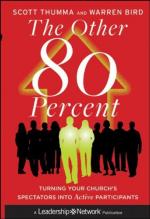But to return to Punning. Having pursued the History of a Punn, from its Original to its Downfal, I shall here define it to be a Conceit arising from the use of two Words that agree in the Sound, but differ in the Sense. The only way therefore to try a Piece of Wit, is to translate it into a different Language: If it bears the Test, you may pronounce it true; but if it vanishes in the Experiment, you may conclude it to have been a Punn. In short, one may say of a Punn, as the Countryman described his Nightingale, that it is vox et praeterea nihil, a Sound, and nothing but a Sound. On the contrary, one may represent true Wit by the Description which Aristinetus makes of a fine Woman; when she is dressed she is Beautiful, when she is undressed she is Beautiful; or as Mercerus has translated it [more Emphatically]
Induitur, formosa est: Exuitur, ipsa forma est.
C.
[Footnote 1: fine]
* * * * *
No. 62. Friday, May 11, 1711. Addison.
‘Scribendi recte sapere est et principium et fons.’
Hor.
Mr. Lock has an admirable Reflexion upon the Difference of Wit and Judgment, whereby he endeavours to shew the Reason why they are not always the Talents of the same Person. His Words are as follows:
And hence, perhaps, may be given some Reason of that common Observation, That Men who have a great deal of Wit and prompt Memories, have not always the clearest Judgment, or deepest Reason. For Wit lying most in the Assemblage of Ideas, and putting those together with Quickness and Variety, wherein can be found any Resemblance or Congruity, thereby to make up pleasant Pictures and agreeable Visions in the Fancy; Judgment, on the contrary, lies quite on the other Side, In separating carefully one from another, Ideas wherein can be found the least Difference, thereby to avoid being misled by Similitude, and by Affinity to take one thing for another. This is a way of proceeding quite contrary to Metaphor and Allusion; wherein, for the most part, lies that Entertainment and Pleasantry of Wit which strikes so lively on the Fancy, and is therefore so acceptable to all People. [1]
This is, I think, the best and most Philosophical Account that I have ever met with of Wit, which generally, though not always, consists in such a Resemblance and Congruity of Ideas as this Author mentions. I shall only add to it, by way of Explanation, That every Resemblance of Ideas is not that which we call Wit, unless it be such an one that gives Delight and Surprise to the Reader: These two Properties seem essential to Wit, more particularly the last of them. In order therefore that the Resemblance in the Ideas be Wit, it is necessary that the Ideas should not lie too near one another in the Nature of




